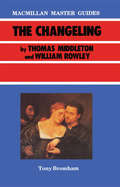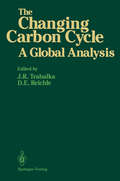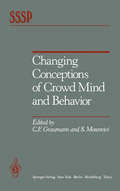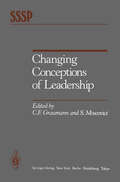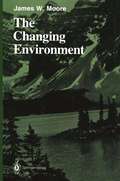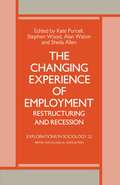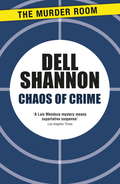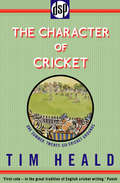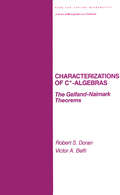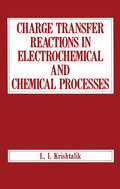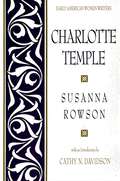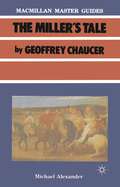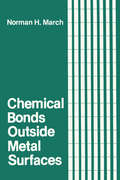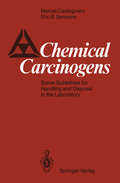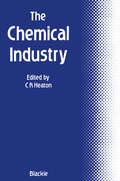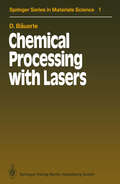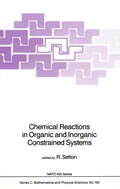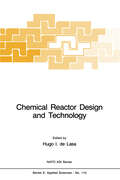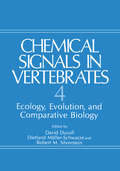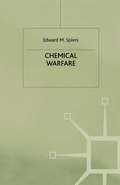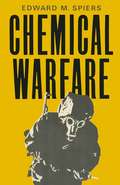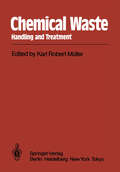- Table View
- List View
The Changing Carbon Cycle: A Global Analysis
by David E. Reichle John R. TrabalkaThe United States Government, cognizant of its responsibilities to future generations, has been sponsoring research for nine years into the causes, effects, and potential impacts of increased concentrations of carbon dioxide (C0 ) in the atmosphere. Agencies such as the National Science Foun 2 dation, National Oceanic and Atmospheric Administration, and the U.S. Department of Energy (DOE) cooperatively spent about $100 million from FY 1978 through FY 1984 directly on the study of CO • The DOE, as the 2 lead government agency for coordinating the government' s research ef forts, has been responsible for about 60% of these research efforts. William James succinctly defined our purpose when he stated science must be based upon " ... irreducible and stubborn facts." Scientific knowledge can and will reduce the present significant uncertainty sur rounding our understanding of the causes, effects, and potential impacts of increasing atmospheric CO2• We have come far during the past seven years in resolving some underlyinig doubts and in narrowing the ranges of disagreement. Basic concepts have become less murky. Yet, much more must be accomplished; more irreducible and stubborn facts are needed to reduce the uncertainties so that we can improve our knowledge base. Uncertainty can never be reduced to zero. However, with a much improved knowledge base, we will be able to learn, under stand, and be in a position to make decisions.
Changing Conceptions of Crowd Mind and Behavior (Springer Series in Social Psychology)
by SergeMoscovici Carl F. GraumannSerge Moscovici It has recently become commonplace to say that science and its history are one. Nonetheless, in practice things have not changed much. We still behave as ifthe two were not really connected. Or else as if it were hard, not to say impossible, to link them in a single enquiry. In such circumstances the group we constitute and which has undertaken the task of studying the history of social psychology while refor mulating its theories represents an experiment. Whether the experiment succeeds or fails, the three aims we have set ourselves are precise: First, we wish to bring up to date the relation between certain topics of psycho logical research and their historical context. Second, we will include within the discussion itself and consider critically some authors and works that have become our classics due to their undiminished signifi cance and heuristic power. But, in this respect, we also consider that we should depart from the attitude of the physical sciences shared by so many psychologists that past acquisitions have nothing to offer as a basis for research. Only those scholars who have said their say and completed their task indulge in such medita tions; therefore work undertaken in this field is unimportant and even illicit. We, on the other hand, are convinced that social psychology is, after all, a social science and that a study based on orthodox theories is still eminently significant.
Changing Conceptions of Leadership (Springer Series in Social Psychology)
by SergeMoscovici Carl F. GraumannThe Changing Environment: World-system History And Global Environmental Change (Springer Series on Environmental Management)
by James W. MooreThis series is dedicated to serving the growing community of scholars and practitioners concerned with the principles and applications of environmental management. Each volume is a thorough treatment of a specific topic of importance for proper management practices. A fundamental objective of these books is to help the reader discern and implement man's stewardship of our environment and the world's renewable resources. For we must strive to understand the relationship between man and nature, act to bring harmony to it, and nurture an environment that is both stable and productive. These objectives have often eluded us because the pursuit of other individual and societal goals has diverted us from a course of living in balance and the environment. At times, therefore, the environmental manager may have to exert restrictive control, which is usually best applied to man, not nature. Attempts to alter or harness nature have often failed or backfired, as exemplified by the results of imprudent use of herbicides, fertilizers, water, and other agents. Each book in this series will shed light on the fundamental and applied aspects of environmental management. It is hoped that each will help solve a practical and serious environmental problem.
The Changing Experience of Employment: Restructuring and Recession (Explorations in Sociology.)
by A. Waton S. Allen K. Purcell S. WoodChaos of Crime (A Lieutenant Luis Mendoza Mystery)
by Dell ShannonAn early June hot spell takes its toll as it fuels a wave of bloody and bizarre crimes for Luis Mendoza of the LAPD. Grisliest by far is the psycho they call the werewolf, who gets his kicks by killing hookers before vanishing into the dark. A gorgeous teenage redhead holds up liquor stores with her boyfriend. And to make the caseload really interesting, 'Jack the Stripper' hits the city's gas stations - stealing cash and his victim's clothes . . .'A Luis Mendoza mystery means superlative suspense' Los Angeles Times
The Character of Cricket
by Tim HealdDuring one long summer during the mid-1980's, Tim Heald toured England, absorbing the flavour of at least one cricket ground in every first-class county, and a good many more besides. He wanted to discover the true character of the English game, among those who ate, slept and dreamt cricket in all corners of the country. The results are charming, heart-warmingly funny, and often surprising. In conversation with the kind of people who give the game its backbone -a gateman at Leicester, the groundsman at Swansea, a programme-seller at Bristol, a quintessential cricket-mad parson at Chelmsford -the author evokes some colourful ghosts, from the ubiquitous W.G. Grace (once punched in the face in Northampton) to Prebendary Wickham of Martock, and hears some strange stories -the Derbyshire captain absconding with the cash (and ending up as a tailor for the King of Spain); the Nottinghamshire team fielding in lounge suits; the match in which the schoolboy Douglas Jardine was reduced to tears by Gubby Allen's gamesmanship. The Character of Cricket is both a celebration of the national game and an evocation of a particular way of life -happily one still pursued in the England of today. "Cricket books should meet one or more of these necessary requirements, being either literate and amusing to read, or meticulously researched, or original in concept. Tim Heald's The Character of Cricket triumphantly meets all three." Benny Green, Sunday Times"First-rate stuff, in the great and ... timeless tradition of English cricket writing." Punch
Characterizations of C* Algebras: the Gelfand Naimark Theorems
by Robert DoranThe first unified, in-depth discussion of the now classical Gelfand-Naimark theorems, thiscomprehensive text assesses the current status of modern analysis regarding both Banachand C*-algebras.Characterizations of C*-Algebras: The Gelfand-Naimark Theorems focuses on general theoryand basic properties in accordance with readers' needs ... provides complete proofs of theGelfand-Naimark theorems as well as refinements and extensions of the original axioms. . . gives applications of the theorems to topology, harmonic analysis. operator theory.group representations, and other topics ... treats Hermitian and symmetric *-algebras.algebras with and without identity, and algebras with arbitrary (possibly discontinuous)involutions . . . includes some 300 end-of-chapter exercises . . . offers appendices on functionalanalysis and Banach algebras ... and contains numerous examples and over 400 referencesthat illustrate important concepts and encourage further research.Characterizations of C*-Algebras: The Gelfand-Naimark Theorems is an ideal text for graduatestudents taking such courses as The Theory of Banach Algebras and C*-Algebras: inaddition , it makes an outstanding reference for physicists, research mathematicians in analysis,and applied scientists using C*-algebras in such areas as statistical mechanics, quantumtheory. and physical chemistry.
Characterizations of C* Algebras: the Gelfand Naimark Theorems
by Robert DoranThe first unified, in-depth discussion of the now classical Gelfand-Naimark theorems, thiscomprehensive text assesses the current status of modern analysis regarding both Banachand C*-algebras.Characterizations of C*-Algebras: The Gelfand-Naimark Theorems focuses on general theoryand basic properties in accordance with readers' needs ... provides complete proofs of theGelfand-Naimark theorems as well as refinements and extensions of the original axioms. . . gives applications of the theorems to topology, harmonic analysis. operator theory.group representations, and other topics ... treats Hermitian and symmetric *-algebras.algebras with and without identity, and algebras with arbitrary (possibly discontinuous)involutions . . . includes some 300 end-of-chapter exercises . . . offers appendices on functionalanalysis and Banach algebras ... and contains numerous examples and over 400 referencesthat illustrate important concepts and encourage further research.Characterizations of C*-Algebras: The Gelfand-Naimark Theorems is an ideal text for graduatestudents taking such courses as The Theory of Banach Algebras and C*-Algebras: inaddition , it makes an outstanding reference for physicists, research mathematicians in analysis,and applied scientists using C*-algebras in such areas as statistical mechanics, quantumtheory. and physical chemistry.
Charge Transfer Reactions in Electrochemical and Chemical Processes
by L.I. KrishtalikThe mechanism of an elementary act is undoubtedly one of the most fundamental problems of chemical and, in particular, electro chemical kinetics. Although this problem has fascinated scientists for quite a long time, it was only in the late fifties and early sixties that it began to be actively investigated for charge transfer reactions. Owing to the development of new methods in the analysis of this problem, significant advancements were made in theoretical as well as experimental studies. These investigations showed that the physical mechanism of charge transfer in all processes including heterogeneous electrochemical and homogeneous chemical and bio chemical processes is basically the same. Hence, the results ob tained in the field of electrochemical kinetics are relevant to the understanding of homogeneous chemical reactions as well. This book endeavors to summarize the results of investigations carried out during the last two decades. It is based on the author's monograph "Electrode Reactions: The Mechanism of an Elementary Act" (Nauka, 1979). As compared to the first version, the book has been considerably revised and enlarged not only to include a large body of data published between 1978 and 1982, but also to analyze in detail the links between electrochemical and homogeneous, in particular enzymatic, kinetics. As a result, a new chapter has been added to the book. The change in the title reflects the fact that the material contained in the book is not restricted to an investigation of purely electrochemical problems.
Charlotte Temple (Early American Women Writers)
by Susanna RowsonThe sentimental novels of the early national period were considered a danger to society and were criticized for the corrupting influence they had on the minds of their mostly young and female audience. They told tales of vice and intrigue that purported to be "based on fact" and also advocated the need for better female education that would prepare young women against sweet-talking seducers. Extremely popular in America after the Revolution and throughout the nineteenth century, Charlotte Temple and The Coquette were two of the most successful novels of the period. Reprinted here in their entirety, with Introductions by the literary scholar Cathy N. Davidson, they offer the modern student a glimpse at the earliest American popular fiction. Charlotte Temple, the most popular novel in America until Harriet Beecher Stowe's Uncle Tom's Cabin, went through over 200 editions. It tells of a beautiful English girl who at the age of 15 is courted by and runs away with a British lieutenant named Montraville. Susanna Rowson, the daughter of a British naval officer, was one of the most accomplished women of the early national period. Actress, song-writer, novelist, poet, dramatist, and essayist, she was also the founder of one of the most progressive academies for young women of her day. She remained best-known, however, for Charlotte Temple, a novel that promised to be "of service to [the]...young and unprotected woman in her first entrance into life." In her Introduction, Cathy Davidson discusses the enormous popularity of the book and the life of Susanna Rowson, which was even more sensational than those of the characters depicted in the novel.
Chaucer: Large Student Annotation Edition: Formatted With Wide Spacing And Margins And An Extra Page For Notes After Each Page Of Verse (pdf) (Palgrave Master Guides #Vol. 2)
by Geoffrey Chaucer Michael AlexanderAuthor Michael Alexander: Michael Alexander is Emeritus Professor of English Literature, University of St Andrews, UK. He is a poet and translator and has international experience of teaching English literature, both medieval and modern. Author Michael Alexander: Michael Alexander is Emeritus Professor of English Literature, University of St Andrews, UK. He is a poet and translator and has international experience of teaching English literature, both medieval and modern.
Chemical Bonds Outside Metal Surfaces (Physics of Solids and Liquids)
by Norman H. MarchThe problem of molecules interacting with metal surfaces has for a very long time been recognized to be of considerable technological as well as fundamental importance. Thus in the former category, a substantial number of important synthetic reactions for industrial purposes make use of metal surfaces as catalysts. Or again, problems of corrosion of metals are of great practical importance, such as in nuclear-reactor technology [see, for instance, my earlier articles, in: Physics Bulletin, Volume 25, p. 582, Institute of Physics, UK (1974); and in: Physics and Contemporqry Needs (Riazuddin, ed. ), Vol. 1, p. 53, Plenum Press, New York (1977)]. It is therefore of significance to strive to gain a more fundamental understand ing of the atomic, and ultimately the electronic, processes that occur when a molecule is brought into the proximity of a metal surface. The present volume focuses mainly on the theory and concepts involved; however, it is intended for readers in chemistry, physics, and materials science who are not specialists in theory but nevertheless wish to learn more about this truly interdisciplinary area of theoretical science. The aim of the book is to present the way in which valence theory can be synthesized with the understanding of metals that has been gained over the last half century or so. While advanced theory has at times been necessary, is largely presented in an extensive set of Appendixes.
Chemical Carcinogens: Some Guidelines for Handling and Disposal in the Laboratory
by Marcel Castegnaro Eric B. Sansone"The chemical laboratory is actually not a dangerous place to work in, but it demands a reasonable prudence on the part of the experimenters and instructers, to keep it a safe place. Emphasis must be positive, indicating the proper, correct and safe procedure to be followed in all laboratory operations or when confron ted with an emergency situation. Too heavy stress upon the horrors associated with laboratory accidents or graphic descriptions of gory injuries or nasty fires should be avoided. Frightened, timid students are more likely to have accidents than the confident laboratory man who works with due regard to safety. " This statement, written by 1. R. Young (1) in 1971, in The Journal of Chemical Education, applies not only to students working in the chemical laboratory but can be extended to all scientists and technicians working with hazardous products, and in particular with chemical carcinogens. The hazards of handling toxic or dangerous chem icals have been well documented. Besides safety notices and articles in the scientific literature, a large number of books have been dedicated to this subject, among which can be cited Safety and Accident Prevention in Chemical Operations (2), Handbook of Laboratory Safety (3), Hazards in the Chemical Laboratory (4), 1 Handbook of Reactive Chemical Hazards (5), Safety in Working with Chemicals (6) and Prudent Practices for Handling Hazardous Chemicals in Laboratories (7).
The Chemical Industry
by C. A. HeatonBackground This book provides an introduction to the main sectors of the chemical industry, and complements An Introduction to Industrial Chemistry (sub sequently referred to as Volume I) which covers the physico-chemical principles of the subject, as well as introductory technical economics and chemical engineering. Processes considered include the large-scale production of polymers (up to 1000 tonnes per day for a single plant); the chlor-alkali, nitrogen, sulphur and phosphorus industries; and the production, on a smaller scale, of dyestuffs, pharmaceuticals and agrochemicals. The rapidly developing area of biotech nology is dealt with under biological catalysis. The consequences of scale of operation are also highlighted in Chapter 7. Each chapter includes common themes, such as brief history, present position, major products and the future. The final chapter links together the predictions made for the future of each sector, to give an overall projection for the whole chemical industry; the quadrupling of oil prices in 1974 and the widespread recession at the beginning of the 1980s provide a salutary lesson about the difficulty of such projections.
Chemical Processing with Lasers (Springer Series in Materials Science #1)
by Dieter BäuerleMaterials processing with lasers is a rapidly expanding field which is increasingly captivating the attention of scientists, engineers and manufacturers alike. The aspect of most interest to scientists is provided by the basic interaction mechanisms between the intense light of a laser and materials exposed to a chemically reactive or nonreactive surrounding medium. Engineers and manufacturers see in the laser a new tool which will not only make manufacturing cheaper, faster, cleaner and more accurate but which also opens up entirely new technologies and manufacturing methods that are simply not available using existing techniques. Actual and potential applications range from laser machining to laser-induced materials transformation, coating, patterning, etc. , opening up the prospect of exciting new processing methods for micromechanics, metallurgy, integrated optics, semiconductor manufacture and chemical engineering. This book concentrates on the new and interdisciplinary field of 1 aser-i nduced chemicaZ process i ng of materi als. The techni que permits maskless single-step deposition of thin films of metals, semiconductors or insulators with lateral dimensions ranging from a few tenths of a micrometer up to several centimeters. Moreover, materials removal or synthesis, or surface modifications, such as oxidation, nitridation, reduction, metallization and doping, are also possible within similar dimensions. This book is meant as an introduction. It attempts to cater for the very broad range of specific interests which different groups of readers will have, and this thinking underlies the way in which the material has been arranged.
Chemical Reactions in Organic and Inorganic Constrained Systems (Nato Science Series C: #165)
by R. SettonThe basic idea of the NATO International Exchange Program for funding an Advanced Research Workshop on "Chemical Reactions in Organic and Inorganic Constrained Systems" was to contribute to a better under standing of the influence of configurational constraints on reaction mechanisms, as imposed on reagents by organic or inorganic templates. The original character of the Workshop was to bring together organic and inorganic chemists with this common interest in order to promote the exchange of ideas and, eventually, interdisciplinary research. All the participants to the Workshop agreed that the discussions were stimulating and fruitful. The judgement of the reader of the Proceedings may perhaps be more restrictive because the director (Professor J. J. FRIPIAT) and co-director (Professor P. SINAY), faced with the impossible task of covering such an enormous domain, were obliged to select, somewhat arbitrarily, a limited number of topics which seemed to them to be the most important. Their choice may be discussed and there surely are important gaps, with fields which were not considered. However, both organisers believe that, within the limited span of time and number of contributors, most of the exciting areas were addressed. Dr. WARNHEIM was kind enough to write a commentary on the Workshop; his summary, written with the hindsight of a few weeks, supports, we believe, this opinion. Dr. SETTON has accepted the burden of collecting and shaping (not selectively) the manuscripts. This book would not be what it is without his efficient contribution as scientific secretary of the Workshop.
Chemical Reactor Design and Technology: Overview of the New Developments of Energy and Petrochemical Reactor Technologies. Projections for the 90’s (NATO Science Series E: #110)
by Hugo De LasaToday's frustrations and anxieties resulting from two energy crises in only one decade, show us the problems and fragility of a world built on high energy consumption, accustomed to the use of cheap non-renewable energy and to the acceptance of eXisting imbalances between the resources and demands of countries. Despite all these stressing factors, our world is still hesitatins about the urgency of undertaking new and decisive research that could stabilize our future, Could this trend change in the near future? In our view, two different scenarios are possible. A renewed energy tension could take place with an unpredictable timing mostly related to political and economic factors, This could bring again scientists and technologists to a new state of shock and awaken our talents, A second interesting and beneficial scenario could result from the positive influence of a new generation of researchers that with or without immediate crisis, acting both in industry and academia, will face the challenge of developing technologies and processes to pave the way to a less vulnerable society, Because Chemical Reactor Design and Technology activities are at the heart of these required new technologies the timeliness of the NATO-Advanced Study Institute at the University of Western Ontario, London, was very appropriate.
Chemical Signals in Vertebrates 4: Ecology, Evolution, and Comparative Biology
by David Duvall Dietland Müller-Schwarze Robert M. SilversteinThis volume reviews recent developments in our understanding of che~ ical signaling in vertebrates. After sections dealing with general princi ples and chemical aspects of vertebrate pheromones, it follows a taxonomic approach, progressing from fish to. mammals. The editors asked a diverse, international group of leading investigators, working on a wide array of vertebrate taxa and specific issues, to consider their efforts from compar ative, evolutionary, and ecological viewpoints. The relative number of manuscripts in each part does not necessarily reflect current intensity of research, since the editors invited speakers who together would provide a balanced and comprehensive overview, while avoiding duplication. Still, the part on mammals is the longest. Fourth in a series dating from 1977, this volume illuminates current trends and likely future developments in the field of chemical signaling in vertebrates. Going back even farther, the first chapter, a personal account of the past quarter century by Dr. Mykytowycz recalls the most important milestones, such as symposia, or the founding of societies and journals. He also credits those investigators who stand out by their seminal studies.
Chemical Warfare
by Edward M. SpiersEver since its employment in the First World War, chemical warfare has always aroused controversy. Governments have responded by pursuing the policies of disarmament and deterrence in the hope of avoiding its recurrence. However, despite the signing of the Geneva Protocol in 1925 which banned the use of poison gas, chemical weapons have been used in subsequent conflicts and most recently in the Gulf War between Iraq and Iran. In this work the policies of disarmament and deterrence will be reassessed within a broad historical and strategic context. It will be argued that poison gas could still be used in a modern European conflict; that the Soviet forces are the best equipped to operate in a contaminated environment; and that weaknesses persist in NATO's anti-chemical defences and in her deterrent. It will be emphasised, too, that the Geneva disarmament talks, which have made some progress in recent years, still face formidable difficulties over the issues of verification and compliance. Above all, it will be claimed that the onset of nuclear parity between the superpowers has eroded the credibility of a deterrent to chemical attack based upon the threat of nuclear release. Accordingly, this book will contend that the United States should modernize her stockpile of chemical weapons to bolster the Western deterrent and to provide more leverage for the negotiations in Geneva.
Chemical Warfare
by Edward M. SpiersA reassessment of the policies of disarmament and deterrence within a broad historical and strategic context. The author argues that poison gas could still be used in a modern European conflict and that weaknesses persist in NATO's anti-chemical defences and its deterrent.
Chemical Waste: Handling and Treatment
by J. Bromley Karl R. Müller J. T. Farquhar P. T. Gidley S. James D. Martinetz A. Robin N. B. Schomaker R. D. Stephens D. B. WaltersDuring the past few years the worlds has reverberated of names like Seveso, Love Canal, Lekkerkerk, Times Beach, just to name the most publicized ones. All these names are connected with hazardous or toxic waste, waste from business and industry, especially the chemical industry. The list is endless because there are, all over the world, many thousands of "points noirs": not yet discovered or identified old lagoons and landfills, polluted rivers, estuaries, and harbors needing remedial action, which undoubtedly will reveal more unpleasant secrets of the chemical industry's past. It is not an exaggerated statement that chemists of the past have paid too much attention to the composition of new products while neglecting the disposition of byproducts, i.e., chemical waste. Admittedly, during the last decade this attitude has changed dramatically. Although we cannot yet properly speak of a new science of peri ontology (the theory of residues), we seem to be headed towards substantiated rules, analyses, disposal protocols, definitions and remedial practices in handling the problems of chemical waste. Especially during the last two years comprehensive treatises of the whole complex subject as well as monographs dealing with assorted aspects of waste tech nology have appeared.
